- Christine Cutucache
- https://www.unomaha.edu/college-of-arts-and-sciences/cutucache/about-us/index.php
- Director of STEM TRAIL Center; Haddix Community Chair of Science; Associate Professor of Biology
- UNO NoyceSCIENCE
- https://www.unomaha.edu/college-of-arts-and-sciences/biology/community-engagement/noyce.php
- University of Nebraska Omaha
- Megan Addison
- Executive Director
- UNO NoyceSCIENCE
- https://www.unomaha.edu/college-of-arts-and-sciences/biology/community-engagement/noyce.php
- Collective for Youth
- Dr. Chris Schaben
- http://www.linkedin.com/in/chris-schaben-7309985b
- Science Supervisor
- UNO NoyceSCIENCE
- https://www.unomaha.edu/college-of-arts-and-sciences/biology/community-engagement/noyce.php
- Omaha Public Schools
- Brian Dorn
- Union Pacific Community Chair of Computer Science Education; Associate Professor of Computer Science
- UNO NoyceSCIENCE
- https://www.unomaha.edu/college-of-arts-and-sciences/biology/community-engagement/noyce.php
- University of Nebraska Omaha
- Dr. Moore
- https://www.creatingscientists.com
- Dr. George F. Haddix Community Chair of Physical Science
- UNO NoyceSCIENCE
- https://www.unomaha.edu/college-of-arts-and-sciences/biology/community-engagement/noyce.php
- University of Nebraska Omaha
- Dr. Neal Grandgenett
- https://www.unomaha.edu/college-of-education/teacher-education/about-us/directory/neal-grandgenett.php
- 32 years
- UNO NoyceSCIENCE
- https://www.unomaha.edu/college-of-arts-and-sciences/biology/community-engagement/noyce.php
- University of Nebraska Omaha
- Patrick Rault
- https://www.unomaha.edu/college-of-arts-and-sciences/mathematics/about-us/directory/patrick-rault.php
- Haddix Community Chair of Mathematics
- UNO NoyceSCIENCE
- https://www.unomaha.edu/college-of-arts-and-sciences/biology/community-engagement/noyce.php
- University of Nebraska Omaha, University of Nebraska Omaha
- Nikolaus Stevenson
- https://www.linkedin.com/in/nik-stevenson-a52ba0181/
- Research Technologist
- UNO NoyceSCIENCE
- https://www.unomaha.edu/college-of-arts-and-sciences/biology/community-engagement/noyce.php
- NE STEM 4U, Univ of NE - Omaha, University of Nebraska Omaha, STEM TRAIL Center, Univ of NE-Omaha
Public Discussion
Continue the discussion of this presentation on the Multiplex. Go to Multiplex








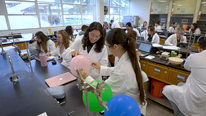
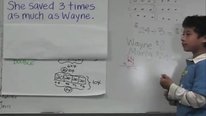
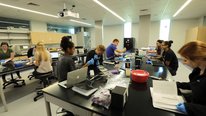
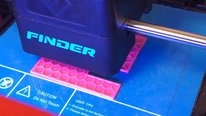
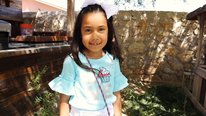
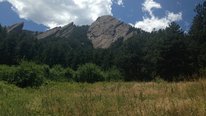
Christine Cutucache
Director of STEM TRAIL Center; Haddix Community Chair of Science; Associate Professor of Biology
Welcome! We are a brand new STEM Center housing multiple types of activities spanning lifelong learning. Research as a pedagogical instrument is our main focus; therefore, experiential learning through genuine experiences in STEM (doing, not just talking about it) is who we are. We place utmost importance on our partnerships, as these are the folks that help us to dream big and guide us to new heights.
We currently have programs that include K-12 outreach, Pre-service and in-service (Noyce & TRPP) teacher programs, and lifelong learner connections through a partnership with the Omaha city-wide STEM Ecosystem. We implement high quality practices in all we do, and have active research programs spanning discipline-based education research across the STEM content areas, social/emotional learning targeting our outreach programs, and we have just begun to offer workshops for faculty specifically aimed at expanding course offerings in active learning strategies (such as inquiry-based learning).
Through our comprehensive team, and outstanding partnerships, we're here to collaborate with you. Interested in sending your child to our program? Interested in attending UNO for college or graduate school? Aiming to expand the metric collection and evaluation practices of your program? Want to attend some more PD surrounding active learning? Send us a message.
We've just started in 2019, so the growth opportunities are endless!
David Andrews
Christine,
The expansive partnership community that your project enjoys and maintains is very impressive. Having this level of commitment from various partners representing the educational community and local community assures greater likelihood of project t impact and buy-in. Nice job!
David
Christine Cutucache
Director of STEM TRAIL Center; Haddix Community Chair of Science; Associate Professor of Biology
Thanks so much, David! We are so fortunate for our expansive partnerships. We continue to learn from each of our partners, so it's great for professional and personal growth, always. Thanks!
Sara Yeo
Assistant Professor
Thanks for sharing your video, Christine! I'm a little confused--how does the STEM Trail Center encourage PD (professional development?) for undergrads? Or maybe I'm missing something (sorry!). Looking forward to discussing.
Christine Cutucache
Director of STEM TRAIL Center; Haddix Community Chair of Science; Associate Professor of Biology
Thanks for visiting, Sara! We offer a broad range of programming. For our undergraduates, they participate in professional development programs such as our NE STEM 4U program (an outreach to K-8 youth in the out of school time space, where they gain targeted workshops on teaching, mentoring, classroom management, youth voice, and how to foster youth leadership), our NoyceSCIENCE program (where our pre-service science teachers/undergraduates in STEM disciplines get targeted mentoring and PD via the leadership team, partnerships through our school district ecosystem, and by gaining specific teaching experiences in "zero hour" high school classrooms). The list goes on, but our website can provide even more information.
Starting this fall, we'll be expanding our undergraduate-focused and faculty-focused workshops and aim to record these (we've now figured out the technology), so we hope that these will be publicly available.
Sara Yeo
Sara Yeo
Assistant Professor
Thanks, Christine!
Meena Balgopal
I enjoyed your video, Christine. It's fun learning about other Noyce programs around the US. It sounds like much of the focus of your professional development programming is building STEM competencies and pedagogical skills for your Scholars. Does your program address issues about the diverse needs of different types of schools (e.g., rural versus urban), or do your Scholars get hired in primarily urban school districts?
Christine Cutucache
Director of STEM TRAIL Center; Haddix Community Chair of Science; Associate Professor of Biology
Thanks, Meena. We are a relatively new Noyce program (we kicked off in May 2017), so our first graduates entered the field this year and exclusively went to an urban setting. However, we hope that future graduates will also consider rural settings. We currently offer, and aim to expand, our rural reach via our NE STEM 4U program, and nearly all of our Noyce participants also mentor and teach via our NE STEM 4U program, so we're trying to provide that wide range of opportunities for our students, but the urban setting has definitely had the greatest attention in our program thus far.
Nancy Shapiro
Associate Vice Chancellor
This is a very attractive video--the clips of the kids doing experiments were wonderful! I understand you have many projects, but how many undergraduates, graduates, K-12 teachers, university faculty (STEM and Education) participate or are supported by the Center? How much of your funding is grant-funded, how much partnership-funded (with schools), how much base-budget from University? Good PR here--can you use it (and your evidence of success) to secure sustainable funding?
Thanks for sharing this!
Christine Cutucache
Director of STEM TRAIL Center; Haddix Community Chair of Science; Associate Professor of Biology
Thanks for your kind note, Nancy. We've been so fortunate to have tremendous partnerships in our great history of STEM at the University of Nebraska at Omaha, largely credited to my colleague Neal Grandgenett, and University leadership that predates my time, too. We're fortunate to have LOTS of partners-- those that are most closely involved include Collective for Youth, Omaha Public Schools, Omaha Citywide STEM Ecosystem (and all of that network), and this list is short- our partner programs total > 80 pages, and can be found within our strategic planning document on our website. We rely on mostly extramural funding (about 90%), and our institution has just made a tremendous investment in resourcing us for the next 5-years to supplement our extramural activity. We really specialize in providing high quality instruction, research, evaluation, and metrics, and welcome partnerships that are interested in the same. Some of these are showcased within our existing publications.
I hear you on the PR-- that's something that we're working to improve. We're working hard to "do", but appreciate these platforms to help share our story more.
Boiler plate for some of our programs with which I'm most familiar: >6,000 youth have come through our programs, >150 undergraduates have taken part in our professional development support systems already (mentorship, workshops, teaching practices), and we're actively developing more resources to bring together other researchers, faculty, students, stakeholders to share our work more widely. Thanks again for your kind note!
Nancy Shapiro
Associate Vice Chancellor
This sounds great--glad you are tracking the numbers, and it sounds like you have garnered enough good will and credibility in the community, that they will continue to support your good work!
Jennifer Carinci
Congrats on the STEM TRAIL Center, Christine and colleagues! Although the specific effort, building on UNO's strong STEM and partnerships history, is new the activities seem well-established and strongly connected across stakeholders, education levels, and partners. The video oozes a productive, positive, collaborative culture. Could you share some insights about how to foster such a culture?
Christine Cutucache
Director of STEM TRAIL Center; Haddix Community Chair of Science; Associate Professor of Biology
Thanks, Jennifer. We've implemented some of the "best practices" from corporate-- including those of the top leaders (such as Patrick Lencioni, with the Table Group). Specifically, we are really focused on a healthy and productive culture surrounding Trust, (healthy) Conflict, Commitment, Accountability, and Results. These principles in putting people first have helped us to be a strong organization. Thanks for highlighting our culture.
Meltem Alemdar
I enjoyed your video. Having a strong partnership is definitely the key. I know that your Noyce program is new, but I was wondering what type of evaluation data do you collect to address the needs of the program, but also document some outcomes.
Christine Cutucache
Director of STEM TRAIL Center; Haddix Community Chair of Science; Associate Professor of Biology
Hi Meltem, thanks. We've just prepared a few manuscripts & those are under review at this time. Briefly, we've collated data surrounding student identity, student meta-cognitive development, the influence of course-based undergraduate research experiences (CUREs) and authentic research experiences on participants, how the STEM ecosystem (with in-service science teachers) supports our scholars, and finally which extracurricular activities (second to coursework) are most impactful for 1) retaining and 2) best preparing our participants. We're very focused on marrying student development theory with that of the best practices that we know from the other Noyce projects already. Finally, additional suggestions are always welcomed! Thanks.
Ivory Toldson
President
Well done. I especially appreciated the inclusion of clips which highlight hands on learning. I also appreciate the commentary on the importance of staff and community partners. It is clear that this project effectively leverages the networks those involved to address the relevant needs within respective STEM fields. I can also appreciate the opportunities for mentorship that can emerge for undergraduate students who are working with younger students in the aftercare program.
Considering the current times and need to transition to a virtual framework, what adaptions have you made and what challenges do you anticipate facing?
Christine Cutucache
Director of STEM TRAIL Center; Haddix Community Chair of Science; Associate Professor of Biology
Thanks for your keen observation of our programming and network, Ivory. Indeed, we work hard to foster these very relationships ensuring that our students and wider community are supported.
Given the current times, we're quickly pivoting to mobilize our resources and programming into a remote framework. For example, we've moved much of our programming to "Webinar" style using Zoom/GoToMeeting. Similarly, we immediately made all of our youth programming/lesson plans publicly available to assist parents with supporting their kids in active STEM lessons at home, using already available household supplies: https://www.unomaha.edu/academic-affairs/stem-t.... Finally, we're working now to mobilize a "3rd dimension" to our activities to include kits and the like to better assist teachers, parents, students, and learners of all levels. We'll be increasing our web-based (webinar style) programming for lifelong learners as well, beginning next week. Our frameworks remain the same (consistent, high quality programming, active engagement) but are carried out in different ways. My personal favorite is our new "Camaraderie Hours", similar to a "conversation around the water cooler" for folks to exchange ideas and garner new partnerships.
Michael I. Swart
A great hands-on project-based program. Thank you for this work. The video mentioned discipline-based education research, can you expound on the theoretical framework undergirding UNO as well as the outcomes used in the evaluation of PD efficacy, and their connection to learning outcomes, and how learning is assessed? Are there long term plans to track teachers to determine the eventual impact on student learning in STEM?
Christine Cutucache
Director of STEM TRAIL Center; Haddix Community Chair of Science; Associate Professor of Biology
Hi Michael, yes, we're using a few theoretical frameworks, depending on the specific, smaller project. For example, we have the constructivist framework (Piaget) with measures to understand specific experiential learning applications from our participants. Additionally, we are utilizing the Chickering's Vectors (1969, and Chickerings & Reisser 1993) for understanding the progress of our undergraduates through the various vectors of student development. Similarly, we have an ecosystem of pre- and in-service teachers of science. Our Teacher-Researcher Partnership Program, led by Dr. William Tapprich (https://www.unomaha.edu/college-of-arts-and-sci...) includes the impact on student learning (as a result of the expansion teacher professional development activities). There are a few publications on this work so far, and several are under review at this time. Great questions! Thanks for visiting our video!
Andrew Meltzoff
The video is very engaging and practically makes you feel like you are there. Nice Job! Our own research concerns STEM stereotypes including ones about 'who does STEM.' We've done a lot on gender stereotypes about STEM. Im wondering if you encounter kids' stereotypes during your work and what you can do to help dampen these stereotypes. Our video this year has one suggestion, but you probably have come up with many approaches. Thanks.
Christine Cutucache
Director of STEM TRAIL Center; Haddix Community Chair of Science; Associate Professor of Biology
Thanks, Andrew. I like your highlight of the ways to bring the earliest learners in to be more STEM minded/included. What a clever way! With our work, we have the largest groups of learners at the middle school level, and we know that many students choose if they "like" science or math at the 4th grade level, and so we aim to really continue building that confidence and showing them the excitement that these fields have to offer. You've given me additional ideas to consider for our earliest learners though, when we work more with the 1-3rd graders. Thanks!